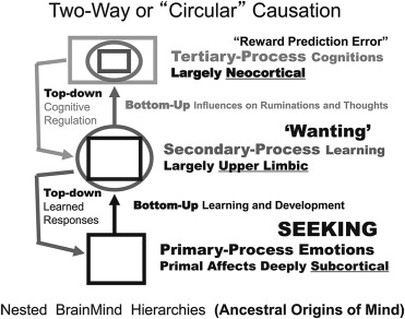
I could easily have been one of the subjects of this study. As an adolescent and teen I was desperate to be "cool," to be seen as mature, and to be "popular." It never really happened, and in some ways I was heading down the path these kids traveled - more relationship difficulties, higher rates of drug and alcohol abuse.
Fortunately for me, I bottomed out as an 18-19 year old, dropped out of the world I had been living in (including leaving behind my friends from high school), and then went back to school (after flunking out of my first college).
The kids in the study didn't make the same changes:
Allen's team said their results show that "early adolescent attempts to gain status via pseudomature behaviour are not simply passing annoyances of this developmental stage, but rather may signal movement down a problematic pathway and away from progress toward real psychosocial competence."Hitting my bottom and becoming introspective (thank you Plato, Aristotle, Shakespeare, Walt Whitman, St Theresa, Mirabi, Rumi, and so many others) saved my life. AND it allowed me to do some growing up that I failed to do as a teenager (no one grows up psychologically when they are high or drunk much of the time).
What happens to the cool kids when they grow up?
Wednesday, July 2, 2014
"Cool kids", according to a new study, are those early teens (aged 13 to 15) who want to be popular, and try to impress their peers by acting older than their years. They have precocious romantic relationships, commit relatively minor acts of bad behaviour (such as sneaking into the cinema without paying), and surround themselves with good-looking friends. These teenagers attract respect from their peers at first, but what's the story by the time they reach early adulthood?
Joseph Allen and his colleagues made contact with 184 thirteen-year-olds (98 girls) from a diverse range of backgrounds, living in the Southeastern United States. They interviewed them at that age, and then again when they were aged 14 and 15. The researchers also contacted some of their close friends and peers. Finally, the sample and their friends were followed up again a decade later, when they were aged 21 to 23.
There were short-term advantages to being a cool kid - these teens tended to be popular when they were in early adolescence. However, this popularity began to fade through teenhood. And ten years later, the cool kids were at greater risk for alcohol and drug problems, more serious criminal behaviour, and, according to their friends, they struggled with their platonic and romantic relationships. As adults, cool kids also tended to blame their recent relationship break ups on their partner not thinking they were popular enough - as if they were still viewing life through the immature lens of cool.
Allen's team said their results show that "early adolescent attempts to gain status via pseudomature behaviour are not simply passing annoyances of this developmental stage, but rather may signal movement down a problematic pathway and away from progress toward real psychosocial competence." They think cool kids' preoccupation with being precocious and rebellious gets in the way of them developing important socialisation skills. It's also likely that as they get older, cool kids feel the need to engage in ever greater acts of rebellion to command respect from their peers.
Is it possible that the researchers were simply measuring a propensity to deviance and criminality in early adolescence, making their longitudinal findings unsurprising? They don't think so. They point out that serious criminality, and alcohol and cannabis use, in early adulthood were more strongly correlated with being a cool kid in early adolescence (i.e. as measured by desire for popularity; precious romantic relationships; minor deviance; and surrounding oneself with good-looking friends) than with alcohol and drug use, and criminality at that time.
The study is not without limitations - for example, cool kids were found to lose their popularity through adolescence, but this was based on a measure of their peers' desire to be with them, not on their status. It's also possible they retained or earned popularity with teens older than them. Nonetheless, Allen and his team said their findings are novel and show that the "seemingly minor behaviours" associated with being a cool kid "predict far greater future risk than has heretofore been recognised."
_________________________________
Allen JP, Schad MM, Oudekerk B, & Chango J (2014, Jun 11). What Ever Happened to the "Cool" Kids? Long-Term Sequelae of Early Adolescent Pseudomature Behavior. Child Development; Epub ahead of print. doi: 10.1111/cdev.12250 | PMID: 24919537
* * * * *
What Ever Happened to the "Cool" Kids? Long-Term Sequelae of Early Adolescent Pseudomature Behavior.
Allen JP, Schad MM, Oudekerk B, Chango J.
Abstract
Pseudomature behavior-ranging from minor delinquency to precocious romantic involvement-is widely viewed as a nearly normative feature of adolescence. When such behavior occurs early in adolescence, however, it was hypothesized to reflect a misguided overemphasis upon impressing peers and was considered likely to predict long-term adjustment problems. In a multimethod, multireporter study following a community sample of 184 adolescents from ages 13 to 23, early adolescent pseudomature behavior was linked cross-sectionally to a heightened desire for peer popularity and to short-term success with peers. Longitudinal results, however, supported the study's central hypothesis: Early adolescent pseudomature behavior predicted long-term difficulties in close relationships, as well as significant problems with alcohol and substance use, and elevated levels of criminal behavior.
Bagaimana Menarikkan Article Pada Hari Ini . BLUE.Jangan Lupa Datang Lagi Untuk Membaca Article Yang lebih Menarik Pada Masa Akan Datang/




 Check Out "The Couch," A New Blog on Mental Health and Addiction
Check Out "The Couch," A New Blog on Mental Health and Addiction





Posting Komentar
Click to see the code!
To insert emoticon you must added at least one space before the code.